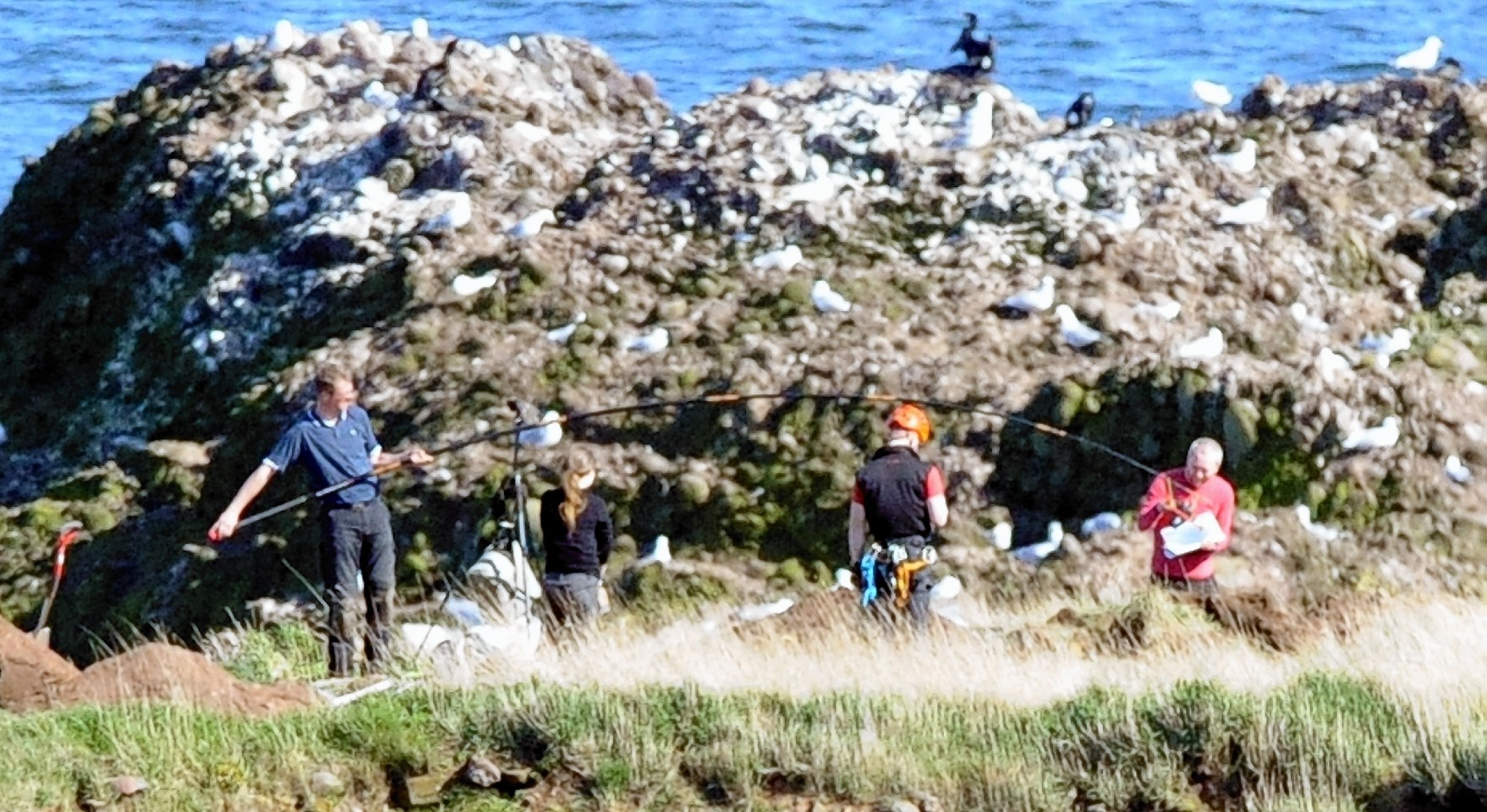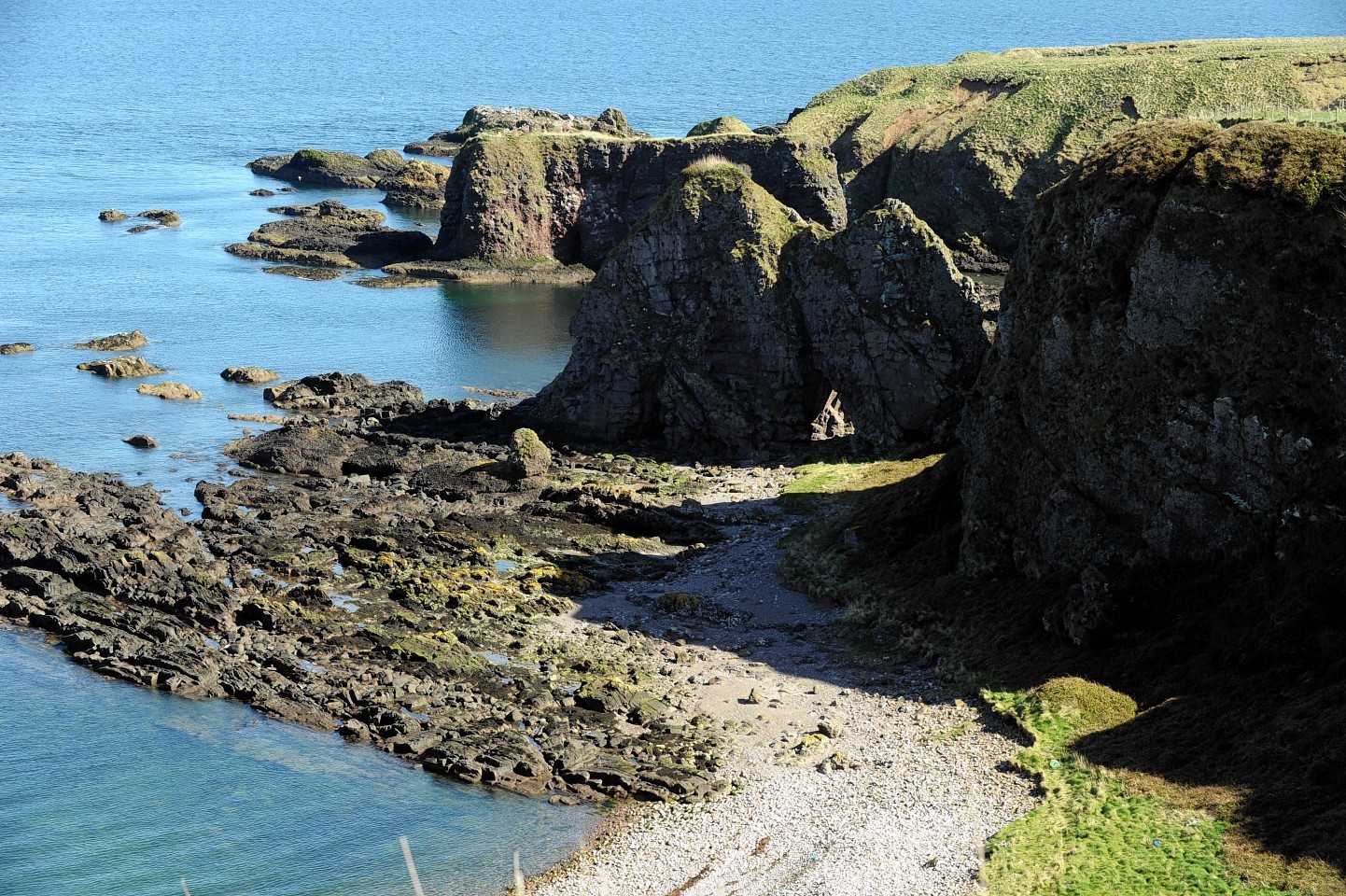Archaeologists believe they have uncovered a Pictish fort off the coast of Aberdeenshire.
The team are excavating a remote sea stack near Stonehaven – and believe their discovery could have been a “precursor” to Dunnottar Castle.
The castle is about a quarter of a mile north of the Dunnicaer sea stack.
It is the first time anyone has investigated the site since the 19th century, when a group of young gold diggers found some Pictish stones.
Last night Gordon Noble, senior lecturer in archaeology at Aberdeen University, said he was delighted his team had found more clues pointing to the Picts.
“In the 1830s, a bunch of local youths from Stonehaven came up the sea stack, at great risk to themselves, after a local gold digger told them he had dreamt there was gold at the top of it,” he said.
“They started digging looking for this gold. They didn’t find it, unluckily for them, but they found a low stone wall on the sea stack.
“Now we’ve refound the stone wall, and it looks like part of a small fort.”
The team of six archaeologists has also found remains of a house, a hearth and ramparts.
Mr Noble added: “It shows that people, for at least part of the year, were living on the sea stack which is quite remarkable.
“There were quite a lot of forts on the coastline and in Moray, control of the sea seems to be a big part of power to the Picts.
“It’s very interesting.
“Was this a precursor to Dunnottar Castle, or a one series of Pictish forts along this coastline?”
Mr Noble said the sea stack was the most “inaccessible” site he had worked on, and that there were signs the 65ft by 39ft stone had eroded over the years.
The team have accessed the site with the help of professional climber Duncan Paterson.
Mr Paterson, of North East Mountaineering, said: “This is the first time I’ve worked with archaeologists specifically.
“I don’t think any of them have much experience of this kind of terrain, so it’s been a big challenge. Beating the tide was also a challenge, and then I set up a tension rope – some would call it a zip wire – to get them across the water and then they were roped up to climb the stack.”
Carbon samples have been taken from the discoveries, and will be analysed to determine if they are from the Pictish era. The team may then return later in the summer or next year for further excavations.











